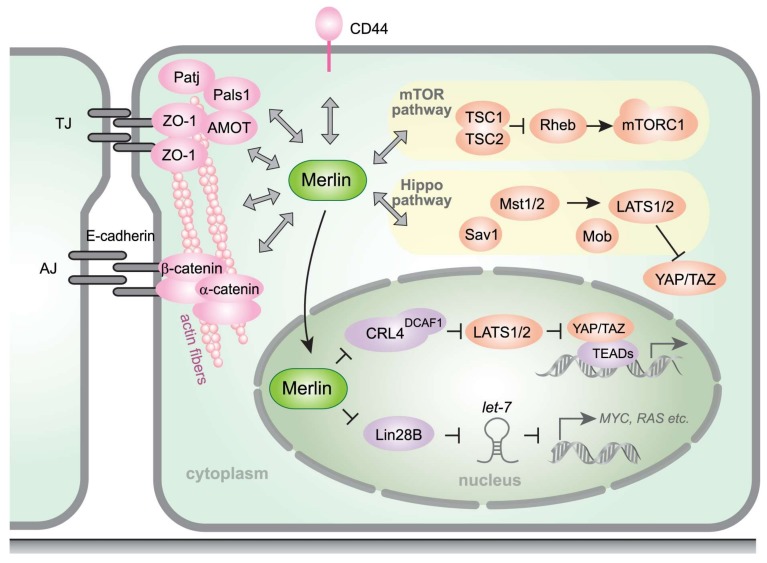Figure 2.
A model of the NF2/merlin signaling pathway. Merlin is involved in contact inhibition by interacting with many membrane-associated proteins such as CD44 [26,27], the angiomotin (AMOT) –Patj–Pals1 complex [48], E-cadherin–α-catenin [30,55], and actin fibers. A loss of merlin expression disrupts cancer-related signaling through the Hippo and mTOR pathways. Merlin is also localized in the nucleus where it binds to and inhibits E3 ubiquitin ligase CRL4DCAF1, which promotes LATS1/2 degradation [66,67], and RNA-binding protein Lin28B, which suppresses let-7 miRNAs that are involved in the silencing of oncogenes such as MYC and RAS [68]. TJ: tight junction; AJ: adherens junction; ZO-1: Zonula occludens-1; AMOT: angiomotin; mTOR: mechanistic target of rapamycin; TSC1/2: tuberous sclerosis complex 1/2; Rheb: Ras homolog enriched in brain; Sav1: Salvador Family WW Domain Containing Protein 1; Mst1/2: mammalian Ste20-like kinase 1/2; Mob: Mps one binder kinase activator-like protein; YAP: yes-associated protein 1; TAZ: WW domain-containing transcription regulator 1; CRL4: Cullin-RING ubiquitin ligase 4; DCAF1: DDB1- and CUL4-associated factor 1; LATS1/2: large tumor suppressor kinase 1/2; TEAD: TEA domain transcription factor; Lin28B: lin-28 homolog B.

